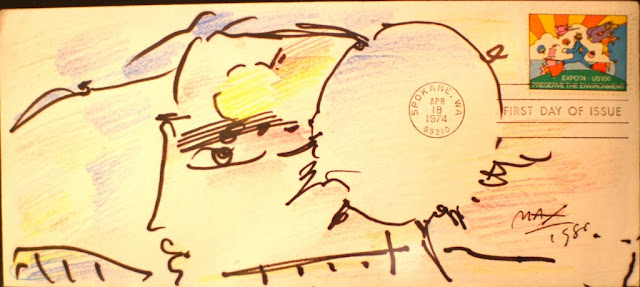A couple days ago I was emailed by Pema about her thesis paper,
I’m studying the impact of digital productivity tools on the user psyche, the concept of digital gardens, and technology designed for reflection. Naturally, a lot of Fog Creek Software’s work came up and I’ve been following your work on Kinopio! I’m fascinated by its evolution and would love if you could answer questions on your philosophy on task management, digital productivity tools, and your intentions with Kinopio!

I thought you might be curious about some of these questions too, so here goes:
Question 1
Why did you make Kinopio, a tool not to manage/optimize tasks, but one for brainstorming and reflection? What were the intended outcomes for users when using a tool that “works the way your mind works”?
The idea originally came from my use of design tools like Sketch. When making mockups for work, I noticed that I was using the text tool to figure out the why and the how behind what I was doing. Unlike writing in a linear document, it felt really creatively free-ing and I wanted to bring a better version of that experience to everyone else.
The more I learned about the field, the more I understood why writing this way felt so right. We’re spatial creatures, with brains designed to associate feelings and thoughts with places and landmarks.
It’s a little depressing that these days we mainly use computers to consume fast and react fast. Task management turns us into more productive human machines. Rather conveniently for managers, human machines have higher predictability and lower inherent value – they’re easy to automate, replace, and erase.
Productivity is important, but it’s just one piece of a bigger world. The history of computing, from WordStar, to KidPix, to HyperCard, to HTML, is the history of creative software designed primarily to help us understand and express ourselves.
Question 2
I see that Kinopio has 5 design principles, unique from the mainstream software landscape. Why this philosophy in general?
The principles behind Kinopio are a reaction to seeing the results of the opposite ideology in previous workplaces. It wasn’t explicitly stated, but if I had to describe the average software company’s lived philosophy, it would look something like:
1. Go big, or go home
2. Low-friction above all else
3. Design for the lowest common denominator
4. Many teams, in many silos
5. No time for refinement, this will be someone else's problem
This philosophy is ironclad but never explicitly declared, because it’s never questioned. Most leaders just assume that’s just how things are, or need to be.
When you’re on the inside, each of these on it’s own sounds reasonable. But taken too far, without nuance, and without an understanding of why, eventually leads products to enshittification.
Question 3
The ‘clean’, minimal experience is a design principle in UI UX today… You reject this in Kinopio. How does this affect the user? Are there other UI UX principles of design you do not subscribe to?
Our inspiration shapes what we build. If all you see is clean minimal product design, then you’ll inevitably make the same. I think that’s why art schools teach art history in year 1, because knowing the varied history and styles of your medium – software included – really helps expand your perspective of what’s possible, interesting, and cool.
Minimalism as an art-style is a pretty tight leash. But if you think of ‘less’ as merely one of many possible techniques used to not overwhelm or confuse users, then you’re in the right place to ask yourself questions like Why is this confusing? From there, maybe you can use other techniques like contextual relevance, or a more intuitive layout, to make important options less confusing, instead of hiding them.
I like to think of Kinopio as a professional tool, like a keyboard synthesizer, or a race car. If you were going 200mph would you rather find your controls inside a clean/minimal/aesthetic menu, or just hit some upfront buttons and dials?

Question 4
Your third principle emphasizes the power of plain text for the user. What are your thoughts on empowering users through Kinopio? What is Kinopio’s relationship to its user?
There’s billions of people on earth, and provided you don’t owe your investors millions of dollars, the software we make doesn’t have to cater to the lowest-common-denominator. For both users and designers, products that are made for a specific group of passionate people can feel like a glass of ice water in a desert. This requires me to be deeply connected to the community in order to understand their needs – and for them to understand mine as well.
To use another physical example, Leica cameras cost way more than their competition and don’t take better photos. But Leica is able to thrive by building cameras with a more opinionated manual-focus-only shooting experience because there are enough photography enthusiasts out there who appreciate the result of those opinions.

Question 5
Can you describe any unexpected outcomes or challenges that arose from developing Kinopio? Were there any unanticipated user behaviors or outcomes?
To be honest, I didn’t expect it to be this hard. To make the business sustainable there’s many new skills like marketing, and being on camera, that I have to get a lot better at.
But having to wear so many hats, you also start to notice patterns. Like the deep anxiety that comes before trying something new, then being okay with sucking at it, and then maybe one day being pretty good at it.
Question 6
How did you measure the success or effectiveness of Kinopio?
📈 The quantitative measures I use are basic things like unique page views, and the revenue numbers reported to me by Stripe. The subjective bits are things like how many people are editing public spaces Live right now, adding their spaces to Explore, or hanging out in the Discord.
Question 7
Have you found any patterns or insights regarding user behavior and psychology through the data collected by your tool? How do you use this information to continuously improve the user experience and provide more effective features?
I don’t perform any analysis of user data so everything I know about users I get anecdotally, and through the feedback I get from sharing works-in-progress. But because I’m building Kinopio as much for myself to use as for others, I’ve got no shortage of features to build, and ideas on how to refine the user experience.
Question 8
Did you encounter any ethical dilemmas during the development process? How did you approach and address those dilemmas while still meeting the intended goals of the tool?
The only thing I can think of is related to funding. It’s something I’ve been approached by investors about in the past, and while I’m grateful to anyone who sees potential in Kinopio, this also led me to come up with the term Organic Software to describe why I’m wary about the long-term ramifications of taking traditional VC.
Question 9
How do you envision the tool evolving to better support users in their personal and professional growth?
Like any kind of growth, it’s a slow, continual process. I have some big feature ideas, and a lot of little quality-of-life improvements. I also have ideas on how to make the community feel like even more of a community. And I also know I need to try new things to get the word out to more people about Kinopio.
It’s all a journey I guess~

 Kinopio
Kinopio
Comments…
Please try again or email me
Or, discuss this post on Hacker News